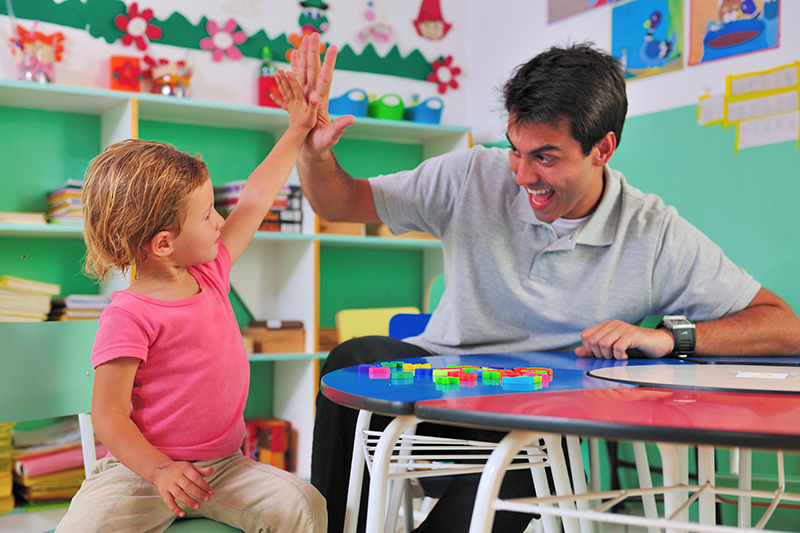If you build positive student-teacher relationships, your students will be more likely to pay attention to you, and there will be fewer disruptions. The best way to gain the respect of your students and have a better behaved and controlled classroom is by putting forth an effort to get to know your students. Improving student-teacher relationships and building a positive classroom environment will optimize learning.
‘Getting to Know You’ Worksheets: A major part of getting to know your students is learning their likes, dislikes, hobbies, passions, and interests and this strategy works wonders in achieving this. At the beginning of the school year, provide your students with a personal questionnaire that will allow them to fill you in on their interests and hobbies. By knowing your students’ interests, you will have something to dialogue with them about, and you can then show an interest in them as individuals. When you can engage in conversations with them on their level about things they enjoy, they will be more likely to listen to you.
Dialogue: We seldom just chat with our worst children despite the fact that having a real, sometimes pointless conversation with another person is one of the very best ways of building relationships and trust. Dialogue is a unique relationship-builder because it evolves over time into a connection and when steps are made to form this relationship, pupils relate to us much more positively.
Active Listening: Active listening is an effective way of showing that you value a person’s opinion. We demonstrate we are listening by making eye contact, stopping other activities so that we can concentrate fully on what is being communicated with gestures and verbal cues. This is an effective way to get your students to talk without offering any judgments or opinions on what they’re saying. Active listening creates rapport with your students.
Share relevant personal stories or anecdotes. By demonstrating a connection between your life and students, you will be able to effectively reach out to students and show that you too are human. Think of humorous personal experiences that will entertain students and convey a strong life lesson. This method may also help students remember information. Make certain that anything you share is age-appropriate, cannot be misconstrued, will not offend anyone, and will not put you in a bad light. After sharing your personal story, ask students if they have ever done or encountered something similar. By implementing this technique, you may even reach out to the quietest of students and get them to open up a bit more to yourself, as well as their classmates.
Offer one-on-one support. Each student in your classroom, regardless of academic or developmental level, should receive individualized assistance at some point. The struggling students need it the most; gifted children need to be challenged, but the average learner also needs one-on-one guidance to reach his or her full potential. Make time to offer individualized support before or after class. Walking around the room while students are engaged in their schoolwork or group projects also provides an excellent opportunity to help students. By making time for each and every student, not only will you be able to help them academically, you will be able to connect with them on a more personal level as well.
Maintain an open-door policy. Let students know that you are always there to help them with an academic or personal issue that may arise. When children approach you about their various issues of concern, use active listening. Actually, listen to the individual’s problem, take the time to process it, and try to come up with a reasonable and practical solution. Offer to help resolve peer conflicts if you notice that two or more students are not getting along thus creating a harmonious and goal-driven learning environment.
Demonstrate mutual trust and respect. Remember that you were once a student too. Think of the teachers that made you feel valued; utilize their approaches and model their positive behaviour. However, do not forget the teachers that you were not fond of or made you feel insignificant; learn from their poor behaviour or inadequate teaching skills, and treat your students the opposite way. By showing students that you care, trust them, and respect them, you will receive the same sentiments in return. Treat children as unique individuals, who are not beneath you, but who deserve your utmost support and encouragement to be able to flourish and succeed. When people feel trusted and respected, they feel good about themselves and develop a greater sense of self-confidence and willingness to progress.
Provide praise and positive encouragement. Nothing makes a person feel better than hearing words of encouragement. Praise and positive reinforcement can come in many ways: an outright written or verbal “good job!”, an A+ on an assignment, work being displayed on the wall of achievement, a note of congratulations sent home to parents, a “student of the week” award, and many others. However, positive encouragement does not mean skipping over areas that need improvement. If a student is underachieving, constructively let him or her know that there are skills or topics that require attention, but also add that he or she is performing very well in other specific areas. Honest feedback will help keep students at the top of their game. As well, this is a great tool to boost children’s self-confidence and self-esteem, keeping their levels of motivation high.
Greet students when they walk into the classroom. Greeting students is a very simple gesture. Give each student a smile. Say “hi” to children in the hallway as well. Just because your class has ended does not mean that common courtesy has to. When you see your students outside of school, take the time to stop and ask how their day or weekend is going. Being social will make students feel good and shows them that you care about them, both as a student and as a human being.•
